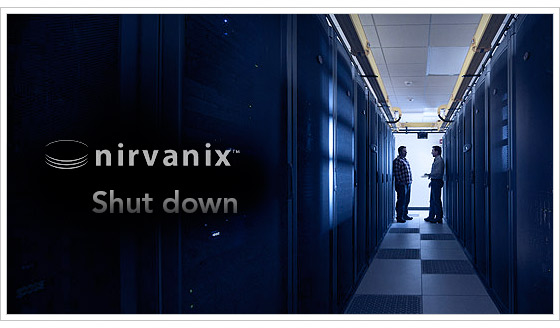In 2007, Nirvanix saw that cloud storage was going to be a major necessity for companies in the future and believed they could differentiate from Amazon Web Services’ (AWS) S3 storage service by focusing on the enterprises that also wanted sales engineers, tech support, and other dedicated services. To pursue this mission, Nirvanix raised $70 million from 2007 through 2012 and the company was considered a potential challenger to EMC, NetApp, and Rackspace in addition to Amazon.
But, on October 1, 2013, Nirvanix filed for Chapter 11 bankruptcy protection. The company gave customers—some of whom had a petabyte of the only copy of their data stored with them—two weeks’ notice to retrieve their data. Shutdowns are difficult and from what I’ve read, the team at Nirvanix worked hard to help customers get their data back. But for customers faced with finding a new home for petabytes of data, that was a bad day.
Howard Marks wrote a good overview for Network Computing about what happened: “The Nirvanix Failure: Villains, Heroes and Lessons.”
Data Storage Alternatives
For Nirvanix customers there are a number of cloud storage options where they can move their corporate data: Amazon S3, Google Cloud Storage, Microsoft Azure, IBM SoftLayer, and others.
Another alternative would be to move the data back in-house. If the data is to be moved in-house, there is a decision of whether to use a vendor (EMC, NetApp, Dell, etc.) or use open-source hardware and software systems.
(Note: Our service, Backblaze online backup, is not an alternative to Nirvanix. We automatically back up laptops and desktops. We do not provide an API to our cloud storage for use by other services and applications.)
Considering and Choosing Data Storage
1. What type of data is it?
Primary data or a backup?
How much reliability do you need?
How important is availability/uptime?
How important is performance?
The answers to these questions will help determine what type of storage you need and thus drive how expensive your in-house storage will be and potentially how complex the architecture will be.
2. How much will it cost to store the data in the cloud versus in-house?
Nirvanix Cloud Storage was priced at approximately $0.20/GB/month. For a customer with one petabyte of data, they would be paying:
- $200,000 per month
- $2,400,000 per year
- $12,000,000 assuming a five year storage lifespan
…for one petabyte.
That’s on the high side compared to other cloud storage services, but not completely out of the ordinary:
- $0.07/GB/month: Amazon Web Services S3 pricing
- $0.10/GB/month: IBM Softlayer pricing
- $0.06/GB/month: Google Cloud Storage pricing
- $0.08/GB/month: Microsoft Windows Azure pricing
This pricing does not include bandwidth and other potential costs.
An in-house solution from an EMC or NetApp will cost approximately $1,000-3,000 per terabyte. Thus, to purchase a petabyte of storage costs approximately $1,000,000-3,000,000, significantly less than storing a petabyte in the cloud for five years.
Finally, using an open source solution, such as a Backblaze Storage Pod design, costs approximately $60 per terabyte. Thus, building a petabyte of Backblaze Storage Pod-based storage costs just $56,000.
3. How technical is the in-house IT team?
If the team is not very technical, it is best to find a good partner, whether cloud or storage vendor, that can ensure the storage service or system meets your organization’s needs.
If the team is quite technical, the team can consider open source hardware and software solutions that may be a major cost-savings for your organization.
Takeaways
When a provider that companies have relied on for several years goes out of business, it causes us to pause and consider. There are many more options for storing large volumes of data today than there were in 2007. In addition to traditional storage vendors and AWS, a variety of other cloud storage options are now available and open source solutions can provide innovative companies with lower cost storage. Hopefully the above will help you choose the right option, or combination of options, for your company’s needs.



